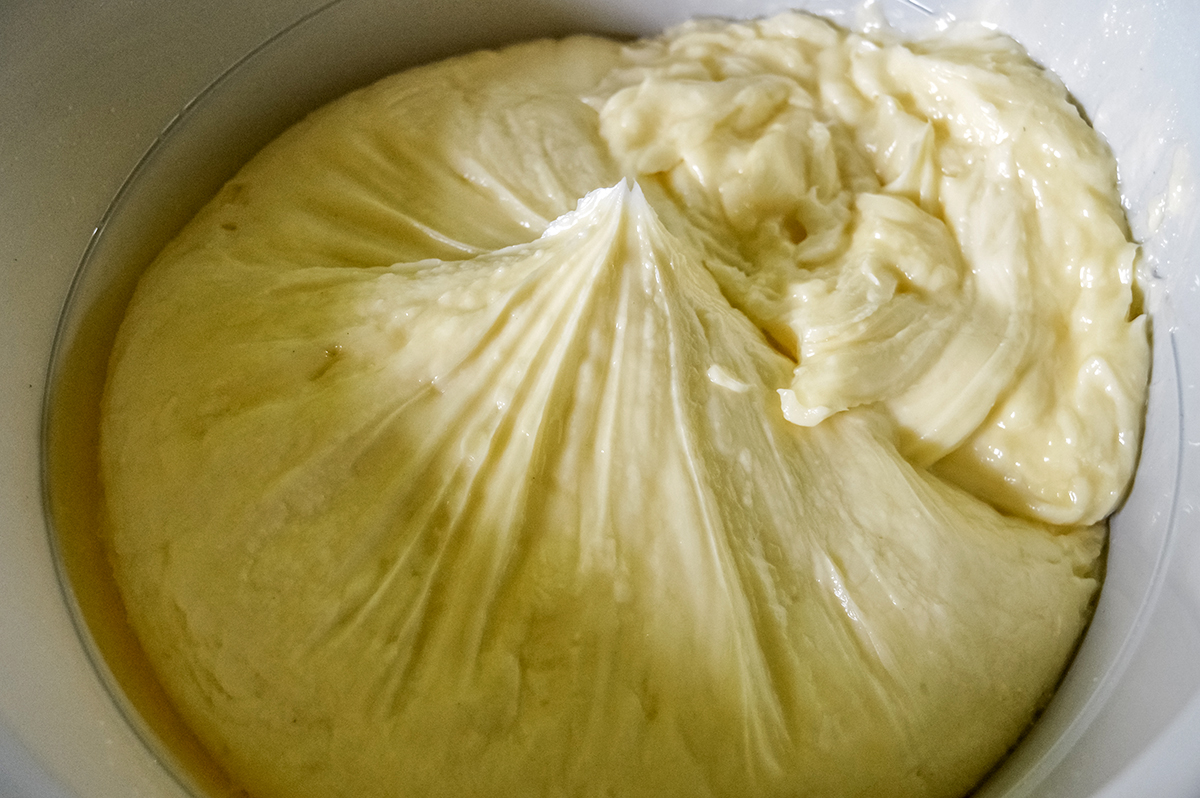
Apophia Agiresaasi, GPJ Uganda
Jolly Keishanyu is preparing the eshabwe, a sauce from western Uganda increasingly popular among Ugandans during holidays and special occasions.
KAMPALA, UGANDA — It is a cold morning. It is raining. The pitter patter of rain on the roof is a relief for many farmers, especially cattle keepers like Jolly Keishanyu. She says the rain ensures that grass grows for her animals to feed on. Keishanyu is the proprietor of Eshabwe Joint Restaurant, located in the Bugolobi neighborhood of this capital city. Sitting in her restaurant, a few bowls are arrayed across her table.
“This bucket has cold water,” she says, pointing to her left. She has boiled the water so it is sanitary, then allowed it to cool down.
“This has dissolved salt,” she says, pointing to a gray bowl on her right.
It’s the basics that make the best meals, Keishanyu says. She is making eshabwe, a sauce often served during special occasions. Her recipe, she says, has traveled a long way.
Keishanyu hails from Isingiro, a district in western Uganda. She is of the Bahima group, a cow herding community commonly known as the creators of eshabwe. It was a popular dish served in her home, she says, and she learned how to make it as a child from her mother. She has been selling the sauce for over 15 years.
When she first started selling eshabwe at the restaurant, she noticed it was mostly popular with people from western Uganda and almost unknown among those from other districts. But at her restaurant, natives from all over the country have come to enjoy the dish, she says. She believes it became popular over time as people began to move around the country and marry people from other groups and regions.
Holding a wooden spoon in her right hand, she grabs the clarified butter and stirs it softly clockwise. She does this for a few minutes and keeps adding salt and water. In about twenty minutes the color has changed from pale yellow to white, and the eshabwe, also known as ghee sauce, is perfectly thick. You can often find ghee in your local store. But ghee is a clarified butter that is usually heated and churned from cream. The Ugandan dish never calls for heating the butter.



Keishanyu says she sells about 48 litres (12 gallons) of eshabwe during the week. When patrons seek the dish around Christmas or special functions, her sales almost double. You can purchase 1 liter (2 pints) of the sauce from Eshabwe Joint Restaurant for 20,000 Ugandan shillings ($5.50).
Though simple and delicious on its own, Keishanyu and other locals will tell you it’s best paired with millet bread, a type of flat bread made from millet grain, which looks a lot like birdseed. Serve the pair with boiled potatoes or steamed and mashed matooke (green bananas) for a full meal.
Rosemary Katuura, a resident of Kampala, says she sometimes makes eshabwe at home. She loves a meal of eshabwe and millet because it requires few ingredients and is nutritious. A native of Kiruhura district in western Uganda, she says that if she is not making the dish at home, she is ordering it at the Eshabwe Joint Restaurant.
“These are delicacies that had to be part of the meal,” she says. “It reminds me of home and of my origins.”



WHAT YOU NEED FOR ESHABWE
- Wooden spoon
- Two bowls
INGREDIENTS
- 1 kilogram (2.25 pounds) clarified butter
- 1/2 liter (1 pint) water
- 1 teaspoon table salt
- Larger rock salt for seasoning
Makes 1 kilogram (2.25 pounds) of eshabwe
Advice from Keishanyu: The butter should be at least three weeks old. Check the date it was made. If you cannot find clarified butter, store-bought ghee will do. Just add a little more water.
- Dissolve 1 teaspoon table salt in 1/4 liter water (1/2pints) in one bowl. Place to the side.
- Put clarified butter, or ghee, in the second bowl and stir using a wooden spoon.
- Keep stirring gently in one direction and add the rest of the unsalted water at regular intervals.
- Add the salt water.
- Stir until the sauce is creamy and thick.
- Run the eshabwe through a strainer to make sure no lumps remain.
- Add rock salt for taste, as needed.
INGREDIENTS FOR MILLET BREAD
- 1 kilogram (2.25 pounds) cassava flour
- 1 kilogram (2.25 pounds) millet flour
- 5 cups of water
Makes two baskets of bread
- In a bowl, measure about 1 kilogram (2.25 pounds) of millet flour with 1 kilogram (2.25 pounds) of cassava flour. Mix thoroughly.
- Place 5 cups of water in a saucepan in a charcoal stove and wait for it to boil.
- Pour about 1 1/2 kilograms (3 pounds) of the mixed flour in the hot boiling water and stir the mixture. Keep stirring using a wooden spoon. Add the rest of the mixed flour until the mixture is fine and the millet no longer sticks to the bottom and sides of the saucepan when turned. It will emit a smell of fresh bread.
- Bake for about 20 minutes. The bread is then ready to eat.
Apophia Agiresaasi, GPJ, translated interviews from Luganda and Runyankore.







